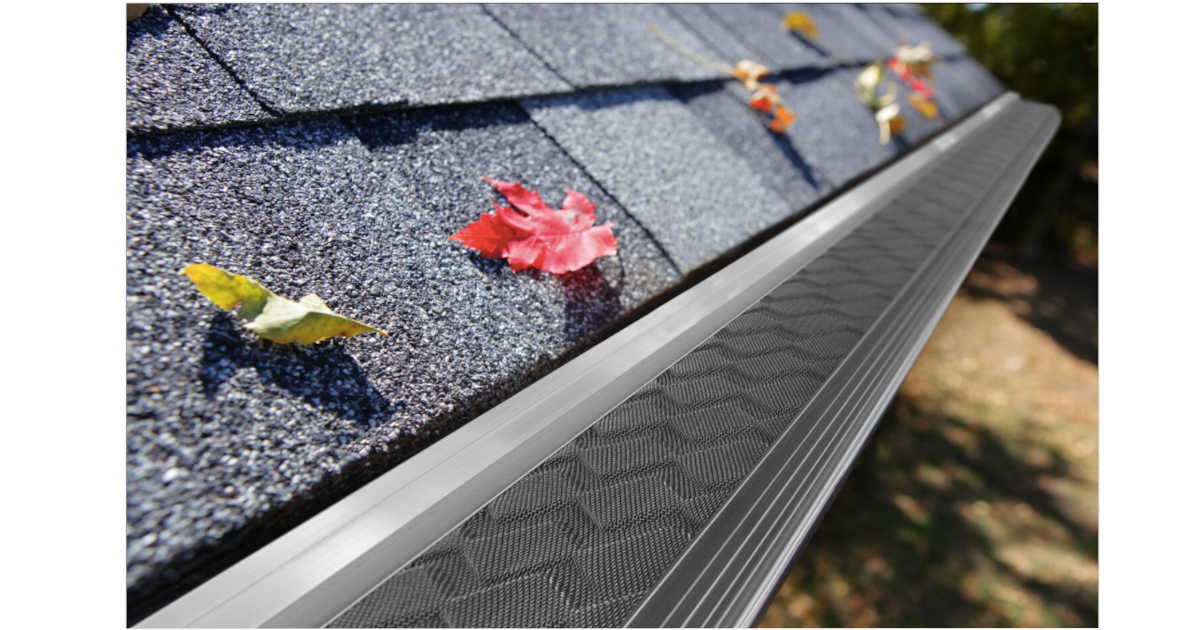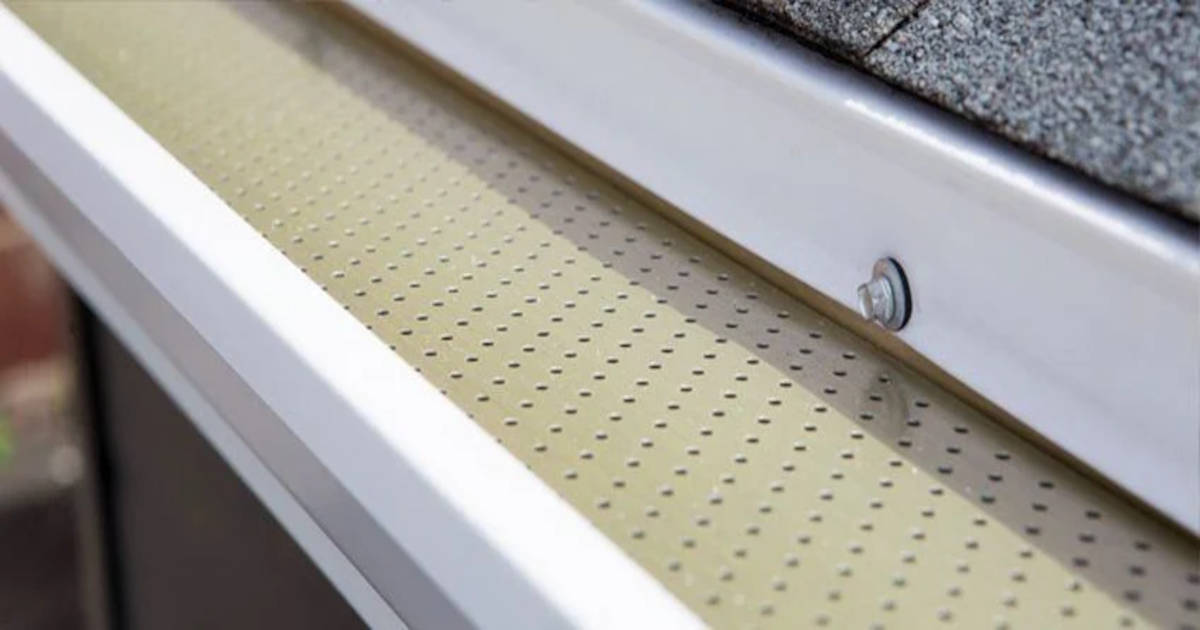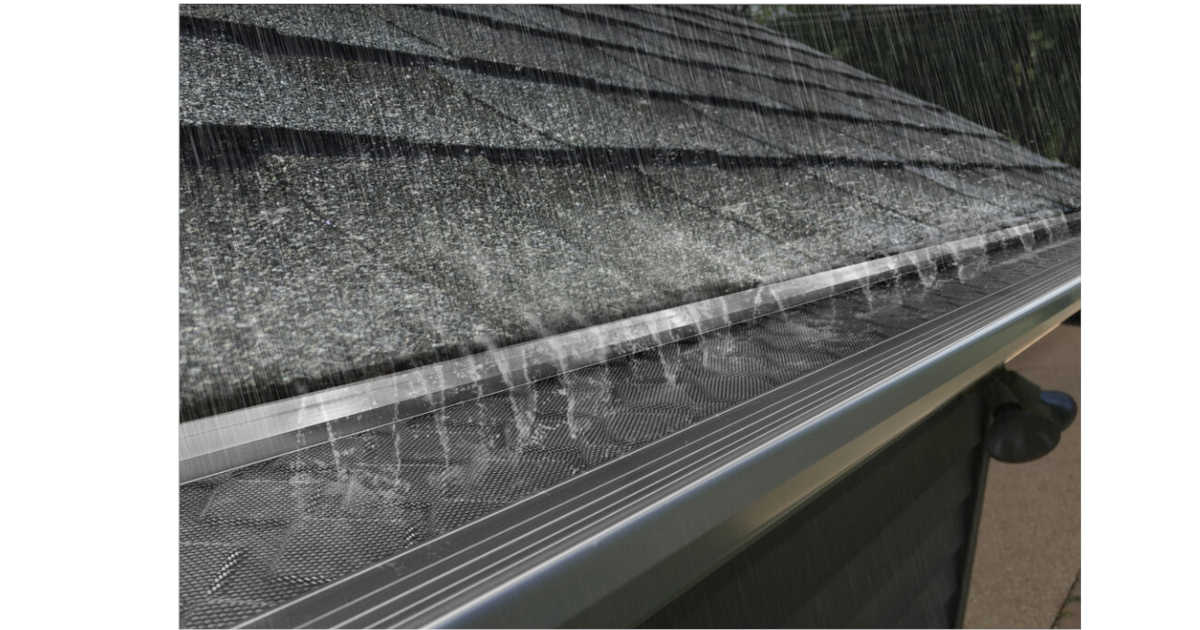The Ultimate Guide to Gutter Guards: Types, Benefits, Costs & Installation Tips
Posted by Steven on July 15, 2025
 Gutters are essential for your house to divert water away from your home. Without gutters, rainwater will damage the siding and trim of your home. The water could also leak into your basement. Eventually, water runoff will damage structural components and cause erosion. While gutters are essential, maintaining them is another story. That's where gutter guards come in. Before you invest in gutter guards, there are a few things most homeowners don't hear upfront. This quick guide covers what you need to know, from how they work to what type suits your home best
Gutters are essential for your house to divert water away from your home. Without gutters, rainwater will damage the siding and trim of your home. The water could also leak into your basement. Eventually, water runoff will damage structural components and cause erosion. While gutters are essential, maintaining them is another story. That's where gutter guards come in. Before you invest in gutter guards, there are a few things most homeowners don't hear upfront. This quick guide covers what you need to know, from how they work to what type suits your home bestWhat Are Gutter Guards and Why Do You Need Them?
One way to fix this problem is to install gutter guards. A gutter guard adds a protective barrier over rain gutters that prevents leaves, twigs, and other debris from clogging them. Rainwater will still be able to flow freely through the gutter. They reduce the need to spend hours on a ladder cleaning gutters.
Find out how gutter guards work, how to install them, and how to clean them.
Benefits of Installing Gutter Guards

Save Time and Reduce Gutter Cleaning Costs
It is recommended to clean your gutters at least twice a year. That means at least twice a year, you need to go around your house scooping leaves, dirt, and twigs out of your gutters. This is no fun at all! Gutter guards are a great way to save time and money on frequent gutter cleaning.
Prevent Pests and Insects in Your Gutters
Without gutter guards, stagnant water in gutters attracts pests like mosquitoes, rodents, birds, and bats. This leads to unpleasant odors and creates a breeding ground for disease-carrying insects and bacteria. Gutter guards reduce standing water and block pests, keeping your home cleaner, fresher, and healthier.
Ember Protection for Rooflines
Gutter guards offer fire protection in locations prone to bush and brush fires. Embers from a fire can travel a long distance. If one lands in the dry leaves and debris stuck in your gutters, it can start a fire. Some gutter guards protect your home by acting as a barrier between debris and lighted embers.
Stop Rust and Corrosion in Your Gutters
Wet leaves and debris sitting in your gutters increase the chances of rust and corrosion forming in your gutters. Preventing debris from building up in your gutters decreases the likelihood of rust and corrosion. This increases the lifespan of your gutters.
Minimize Ice Dams in Winter
If water gets trapped in your gutters during winter, it can freeze and create ice dams. While gutter guards might not eliminate ice dams, preventing debris in your gutters may alleviate them.
Prevent Clogs and Improve Rainwater Flow
Installing gutter guards will prevent your gutters from being clogged or blocked. This will keep your gutters from overflowing during heavy rain. The guards will ensure a better flow of water through the downspouts.
Types of Gutter Guards and Which One is Best for You
Learn the main types of gutter guards to help you decide which is the best gutter guard for you.
Brush Gutter Guards
Brush gutter guards look like large, circular brushes and sit directly inside your gutters. They capture large debris like pine needles, twigs, and leaves while water flows through regularly. Brush gutter guards are designed to be easily installed. Brush guards have the disadvantage of trapping smaller debris in the bristles, which also requires more cleaning and maintenance.
Foam Gutter Guards
Usually made of polyurethane, foam gutter guards slide into the gutter. Water passes through the foam while debris is left on top. They are easy to install and low-priced. There are multiple drawbacks to foam inserts: they do not last long, debris can pile up on the foam, and they do not allow great airflow, which can result in mold.
PVC Gutter Guards
Polyvinyl chloride (PVC) gutter guards are among the most durable on the market. PVC covers can protect you from large debris; they are also mildew-resistant and work well in most weather conditions. Most homeowners hire a professional because installing them can be difficult. Additionally, they can be expensive to replace and require immediate maintenance if they crack or sustain water damage.
Perforated Gutter Guards
Made from plastic or metal, perforated or gutter guards are flat screens with holes that are bent or clipped to fit into or on top of the gutters. The large holes allow water to flow through but stop debris. While easy to install, perforated guards cannot trap seeds or pine needles, require yearly cleaning, and are not ideal for windy areas. Additionally, plastic screens need to be frequently replaced.
Mesh Screen Gutter Guards
Mesh screen gutter guards have a similar function to gutter screens, but they have smaller holes. Mesh guards are better at catching debris. They are made of metal or plastic. Because they block more debris, they require less maintenance and last longer than screen guards. They have a higher price tag than other guards, and they are more difficult to install; most people hire a professional. Some screen guards will slide under the bottom row of roof shingles if installed incorrectly, which could damage the roof and void your warranty. Mesh screen guards still need to be cleaned about once a year.
Micro-Mesh Gutter Guards
Micro-mesh guards have even smaller holes than basic mesh gutter guards that allow small particles to pass through. Made from stainless steel or aluminum, they are appealing to look at and can last up to 30 years with proper maintenance. Micro-mesh is high cost, requires regular cleaning and immediate maintenance if damage occurs, and usually requires professional installation.
Surface Tension Gutter Guards
Also known as curve gutter guards or gutter helmets, surface tension gutter guards conduct water into the eavestroughs of your home and keep leaves out of your gutters. These gutter guards are unique because they completely cover your eavestrough. They typically last a long time and require minimal maintenance. While they block large debris well, they do not block small debris. Surface tension guards are heavy and typically require professional installation.
How Much Do Gutter Guards Cost? (Pricing by Type)

Looking for gutter guards? Prices vary depending on the type, and each option has a different lifespan. Here's a quick guide for 150 linear feet so you can plan your budget.
- Mesh Screen: $150 - $600
Affordable and reliable, these guards typically last 5 to 10 years.
- Micro-Mesh: $1,000 - $1,350
Top-tier protection with a fine mesh that can keep gutters clear for 10 to 20 years.
- Foam: $200 - $400
Budget-friendly and easy to install, but expect to replace them every 3 to 5 years.
- PVC: $40 - $150
One of the cheapest options, but less durable, lasts around 5 to 8 years.
- Brush: $400 - $500
Simple and effective, but it needs frequent cleaning and replacing every 3 to 6 years.
- Surface Tension: $525 - $975
A smart middle ground, offering durability and a lifespan of 10 to 15 years.
How to Install Gutter Guards on Your Home
The exact installation method will depend on the type of gutter guard you purchase. Here are the basic steps for gutter installation. You need a ladder, a pencil/marker, and shears.
- Gutter Cleaning: Remove all debris from gutters and downspouts.
- Slide Gutter Guard Under Shingle: To install the guards, slide the flat side up under the roofing shingles so they're between the wood and the shingles. A design that slides under the bottom row of your roof shingles can damage your roof if incorrectly installed, and that can void your roof warranty. Screw in fasteners if needed.
- Clip Guard to Gutter: When the gutter guard is in place, push the lip of the guard to the gutter until it clips on.
- Cut the Final Guard: At the end of the gutter, you need to cut the length of the guard to make it fit. To finish the job, measure the remaining space, mark the measurement on the last guard, and cut the guard with a tin snip or shears. After cutting, install the guard the same way as the others.
When to Hire a Professional for Gutter Guard Installation
Consider contacting a professional if you lack DIY experience, you're uncomfortable, or incapable of climbing or standing on ladders. Another reason is if your gutter system is elaborate or in poor condition. Professionals can address problems that are specific to your home or region, such as excessive overhead tree cover or ice dams.
How to Maintain Gutter Guards for Long-Term Performance
While they are designed to eliminate the need to clean gutters, gutter guards do require occasional maintenance to prevent debris buildup and ensure proper water flow. Here are some steps you can take to extend the lifespan of your gutter guard.
Cleaning Gutter Guards Properly:
Rinse with a garden hose to flush out debris
Use a soft-bristled brush for stubborn debris
Use a leaf blower for surface debris (especially mesh guards)
Inspect for Damage and Debris:
Check gutters at least twice a year and after major storms
Look for:
- Debris buildup
- Overflow during rain
- Sagging sections
- Stains on siding/foundation
- Plant growth in gutters
Address issues immediately
Preventive Maintenance Tips:
- Trim overhanging tree branches to reduce debris
- Keep downspouts clear
- Use gutter sealant to prevent leaks
- Call a professional if overflow or clogs persist
Remove Gutter Guards for Repairs or Deep Cleaning:
- Identify the type of guard (fastened or snapped-in)
- For fasteners, use a screwdriver or drill to remove screws/bolts
- For snap-in: gently pry with a flathead screwdriver
- Remove in sections if needed to avoid damage
- Lower guards carefully to the ground before cleaning or repairing
Conclusion: Are Gutter Guards Worth It for Your Home?
Gutter guards extend the life of your gutters and reduce the hassle of cleaning. There are several gutter guards available to fit your needs and budget. Remember, only install them yourself if you know what you are doing. Take care of your gutter guards to keep them functioning.